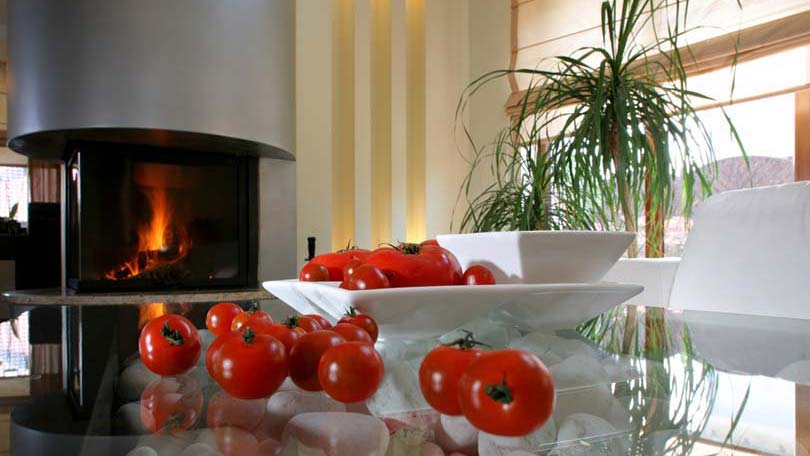
Have you have ever felt as if you were going to collapse while you were busy painting your home? It’s a horrible feeling and one that you won’t be keen to repeat. If you haven’t had this experience it’s probably because you don’t do your own painting, or because you are an informed person and use environmentally friendly house paint.
While humans have been using paint to add color and interest to their home environments for centuries, it is only in relatively recent times that toxins – in particular lead and volatile organic compounds (VOC) – have been added to paint. Paint chemists probably didn’t decide to add these compounds to hurt people – they’d have been crazy to do so. But sadly this is the result. The motivation of highly trained and usually highly paid chemists was clearly to make superior paint products with better color and increased life. This, in turn, would mean better sales, and therefore higher profits, for the manufacturing company.
You might think that this dedication for improvement was due to consumer demand; which in many ways it was. The irony though is that because lead and other VOCs in paint are now recognized as being harmful to man and to the environment, consumers are demanding environmentally friendly house paint products. This has resulted in a whole new breed of paint chemists, and a bunch of companies determined to supply the growing demand for paint that won’t harm anyone or anything.
For quite a while, house paints sold in Northern America and other parts of the world have been required to comply with laws that specify minimum environmental standards. Issues include the percentage of toxic ingredient in the paint. These may be chemicals or harmful preservatives.
By the same token, synthetic paints are likely to last a bit longer, and because they are mass produced by multi-national companies that have been doing this for decades, they are also cheaper. So why buy more expensive products?
The honest answer is that because if products are environmentally friendly and they work, you may just as well do your bit to help save our planet. And by all accounts our planet is in REAL trouble. Another thought is the effect that non-environmentally friendly paint has on us human beings. You could try painting a small room with a regular, off-the-shelf toxic paint – making sure that the windows closed. While it might convince you to switch to zero VOC paints, this is one experiment we don’t advise.
Of course, unlike products developed by the multi-nationals, eco-friendly products are not always available everywhere. So you will have to do a bit of homework in your area to see exactly what is available to you in terms of environmentally friendly house paint.
Some of the ground-breaking eco-friendly paint types use milk, soy beans or clay and pigments. The best of them are categorized as being totally zero VOC. Here are a few examples:
The Real Milk Paint Co. makes paint based on old recipes that used things like old curdled milk, cottage cheese, lime and earth pigment. It works best on raw wood and unsealed walls or board. However this company’s products won’t coat metal surfaces, plastics or anything that has already been painted with an oil-based or enamel paint product. According to the company, the paint is suitable for exterior use and will get increasingly tougher as moisture passes through the paint.
Homestead House in Toronto, Canada also supplies milk paints, and are the only Canadian company to do so. This company recently developed a milk paint bond that can be used on previously painted and varnished surfaces so that you CAN use milk paint to repaint them.
Bioshield, a company making natural paints that operates in both the US and Canada, is another manufacturer of milk paints – so you will see that this is a trend that is spreading fast. They also make clay paints and related products, none of which contain toxins, additives or harmful chemicals.
Green Plant Paints produce zero VOC interior paint products that are soy-based. They don’t contain any petroleum, but rather clay-based pigments and other renewable materials. According to the manufacturer, the paint is sustainable, tough, durable and long lasting.
Another Canadian company, Eco-House, Inc. produces a silicate dispersion paint (or inorganic mineral paint) that is said to be hugely durable and even resistant to acid rain. It uses technology that was developed in Germany during the late 1880s and has been used for a number of historical restoration projects. What makes this paint different is that it uses a liquid mineral as the binder. Furthermore, the paint bonds by penetrating into the surface, repelling water but allowing water-vapor to penetrate. Better still, (they say) it won’t blister or peel. Currently products are available in white and nine additional colors.
Anna Sova, a company that specializes in organic luxury products, is another to manufacture milk paints. Based in Dallas, Texas, this company boasts that its paint products are made with up to 90% food ingredients. This in itself makes them a little different from the all the other eco-friendly brands. Yummy! Maybe with their products you can like the walls of your rooms that are painted with environmentally friendly house paints!
